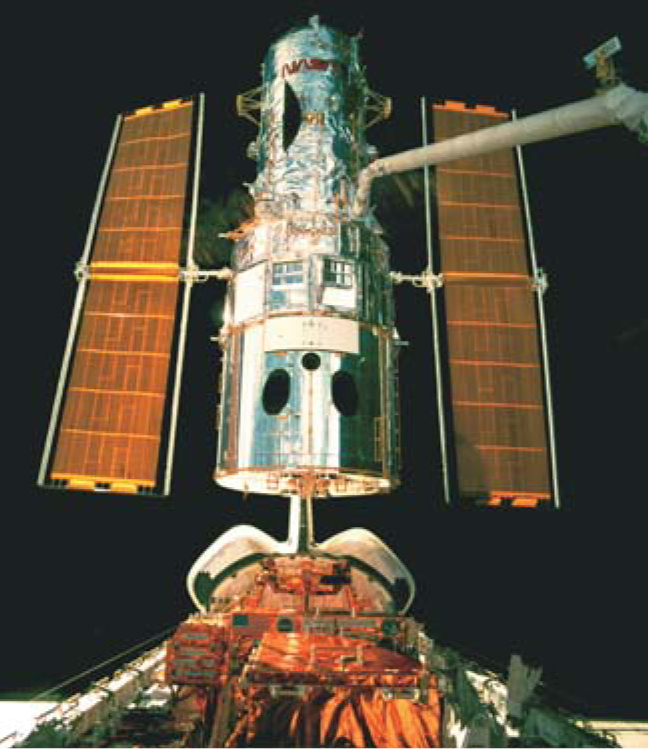Manned mission to service Hubble
DOI: 10.1063/1.2435674
The Hubble Space Telescope will get a manned service mission after all, NASA administrator Michael Griffin announced on 31 October. Discussion over whether to go back to the HST had pitted popular support against opposition by NASA headquarters. Griffin received a standing ovation from scientists present at the announcement at NASA’s Goddard Space Flight Center in Greenbelt, Maryland, home of the HST operations.
A $900 million, 11-day service mission by the space shuttle Discovery, planned for May 2008, will replace gyroscopes, batteries, and a guidance sensor, and attempt to fix the Space Telescope Imaging Spectrograph, which was installed in 1997 and stopped working in 2004. The mission will also replace the Wide Field Planetary Camera 2 with an improved model and replace the lenses used to correct the HST mirror (the COSTAR module) with the Cosmic Origins Spectrograph, which can work without COSTAR. The crew will also affix a bracket to the underside of the telescope to accommodate a de-orbit module that will be attached onto the HST at a later date, by either a robotic or a manned mission.
NASA had investigated sending a robotic mission to the HST after a service mission was cancelled in the wake of the 2003 space shuttle Columbia tragedy. A National Academy of Sciences advisory panel that reviewed the cancellation (see Physics Today March 2004, page 29
The successor to the HST , the James Webb Space Telescope , is behind schedule, and is not expected to fly before 2014. The new plan will allow HST observations at UV and near-IR wavelengths to continue beyond 2013, instead of ending in late 2008, when the HSTs current batteries are expected to fail.

During a 1997 servicing mission, the space shuttle positions the HST into a cargo bay with a robotic arm. A final servicing mission is planned for 2008.
COURTESY OF NASA

More about the Authors
Paul Guinnessy. American Center for Physics, One Physics Ellipse, College Park, Maryland 20740-3842, US . pguinnes@aip.org





